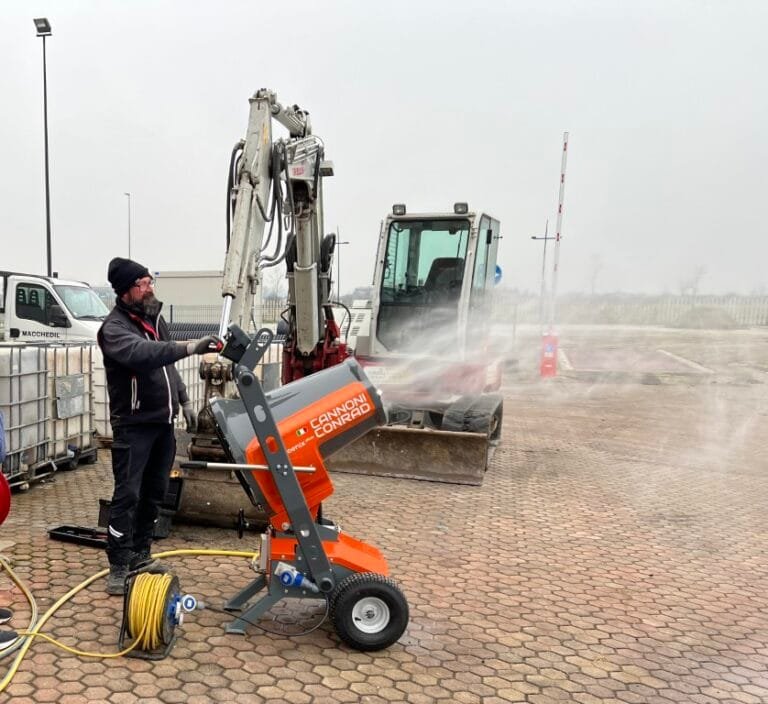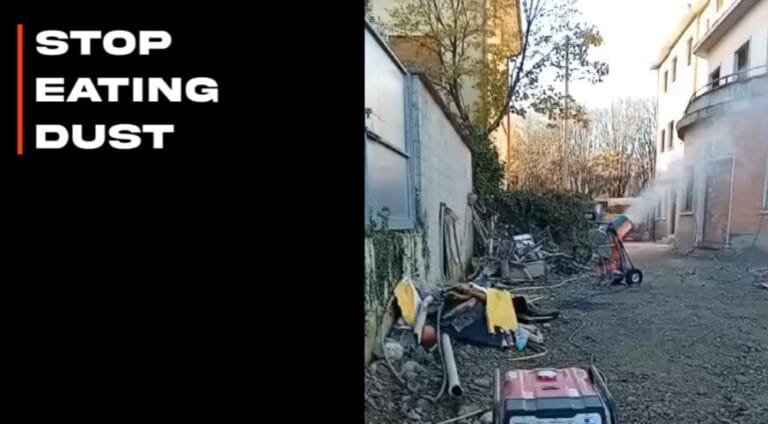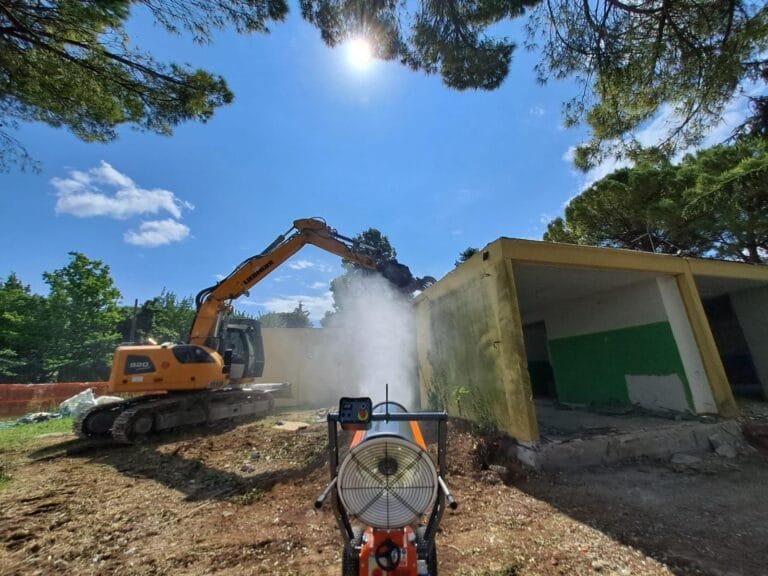Imagine a quarry in full swing: trucks, excavators and other heavy vehicles are constantly moving around, raising huge amounts of dust into the air.
This dust can have harmful effects on those working on site and can also have negative consequences on the surrounding environment. In addition, dust can reduce visibility and increase the risk of accidents in the workplace.

possible solutions

One of the most popular ways of solving the problem of dust raised by means is certainly the use of sprinklersthose in the agricultural sector.
The jets of water wet the ground, preventing the dust from rising.
This methodology is certainly quick and inexpensive at first glance. In reality it hides (not too much) several pitfalls. First of all, agricultural sprinklers, having the objective of irrigating for crops, throw abundant amounts of water and this is good in agriculture because its purpose is to spray the cultivated fields abundantly so that the crops thrive. In a quarry, the situation is different and this is why we can say that the use of sprinklers is unsuitable and even counterproductive, in fact the large quantities of water thrown in will over-wet the soil, solving the dust problem, but generating a second collateral problem: the mud. The vehicles will no longer lift dust but will fill their tyres with mud and distribute it on the road surface once they leave the quarry.
In this regard, Article 15 of the Highway Code lists the prohibited acts for motorists. In particular, it details how it is forbidden to carrying or spreading mud or debris even with the wheels of cars or motorbikes from accesses and branches. Otherwise, there is the administrative penalty of payment of a sum of between EUR 41 and EUR 168.
Let us also not forget that agricultural sprinklers consume large quantities of water and in the long term such a solution cannot be considered sustainable.
the right solution
A possible ecological and conscientious solution to this problem is the use of atomising cannons. These devices are designed to spray finely-vapourised water into the air, which can effectively abate dust.
The principle is simple but incredibly effective: lightly vaporised water captures the dust particles in the air, causing them to fall to the ground. This significantly reduces the amount of dust in the air, improving the air quality for those working nearby and reducing the environmental impact. The sprayed water falls to the ground, moistening it, without creating puddles, rivulets of water or slush.
In addition to improving air quality, spray cannons offer other advantages. They can be easily adjusted to suit specific site requirements, allowing precise control over the amount of water sprayed. In addition, they are often designed to be mobile and easily transportable, making them ideal for use in dynamic environments such as quarries and construction sites.
In essence, the use of atomising cannons represents a effective and efficient solution to tackle the problem of dust raised by vehicles in quarries and on construction sites. They not only improve working conditions for those working in the field, but also help to preserve the surrounding environment, proving to be a valuable investment in occupational health and safety.






